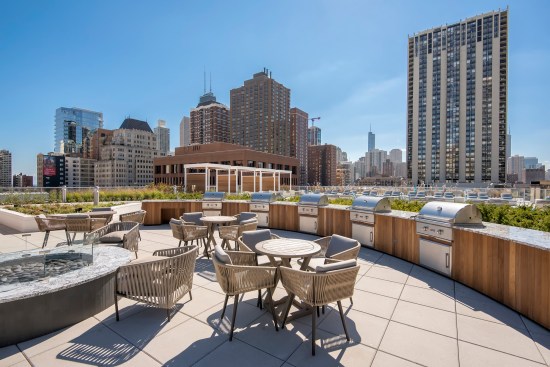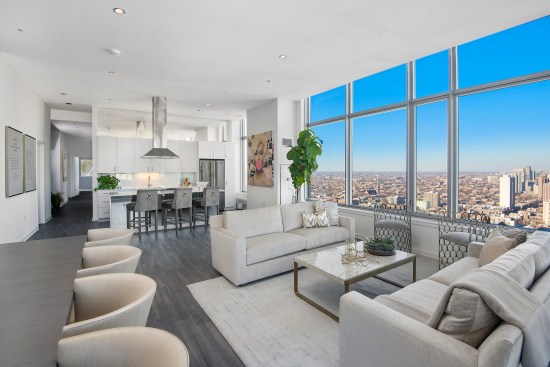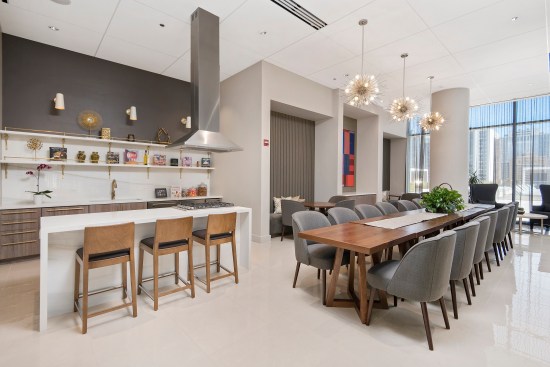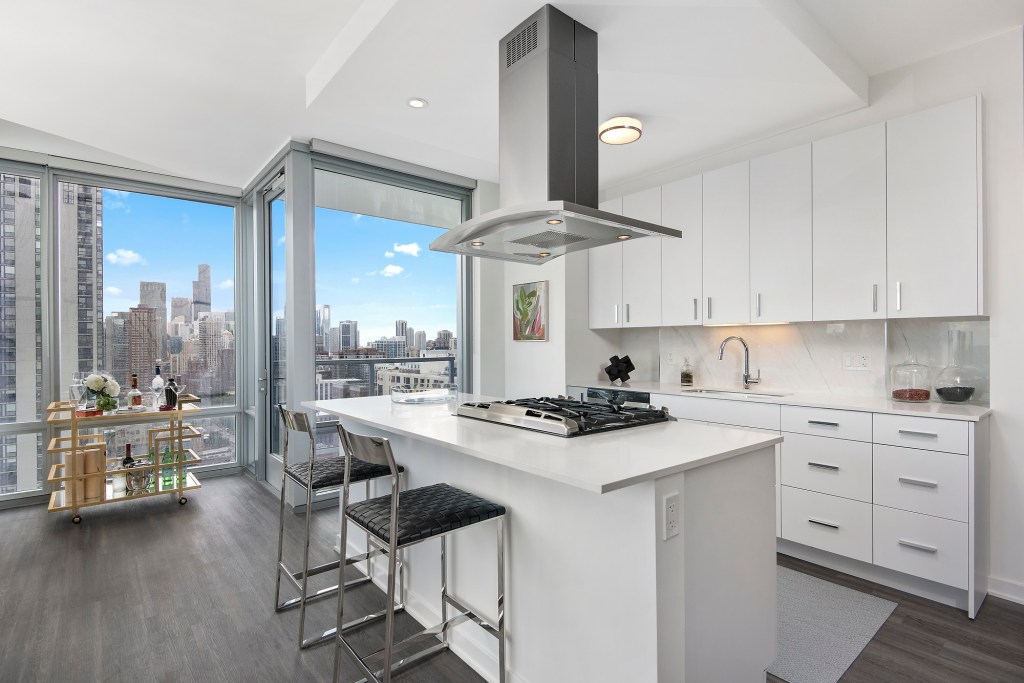Chicago-based Fifield Cos. has developed 30 residential properties in its home base, along with office buildings. Its latest rental apartment building occupies an acre site in what is a new neighborhood for the company—the tony Gold Coast on the Near North Side.
“It was an area that didn’t have a luxury rental building to appeal to young professionals who wanted higher quality than typical workforce housing and a quieter neighborhood than River North,” says Randy Fifield, chairwoman of Fifield Realty Corp. Her company also recognized that the building would appeal to boomers giving up a house and wanting condo-quality amenities, building materials, and services without buying, she says.
The Sinclair became the first luxury rental in the area in 30 years.
Patience Makes Perfect
Good sites are hard to come by. For seven years, Randy and husband Steven, chairman of the parent company, eyed the North LaSalle Avenue property, with its older grocery store and parking lot. After acquiring the site in late 2015, the couple endured a long planned urban development (PUD) process. They and their architecture/design/planning team at SCB (Solomon Cordwell Buenz), an 87-year-old Chicago firm, imagined a 35-story iconic glass tower.
“We wanted to create an attractive gateway to the Gold Coast. So did our joint-venture partner, Jewel-Osco, which doubled the size of its [grocery] store to help foster the vision,” Randy Fifield says.
But the design was complicated because the parcel was large, spanned an alley, and was adjacent to a high-density residential neighborhood, says lead architect Steve Hubbard.

Jim Tschetter
Despite Chicago's long, usually snowy winters, The Sinclair's developer included a much-desired outdoor pool, grilling stations, and patio dining, since many of the city's residents love being outdoors as soon as the weather warms.
Ramped-Up Amenities
Any savvy developer going after upscale occupants knows to include today’s most popular amenities. For The Sinclair, that meant 12,000 square feet indoors and 30,000 square feet outdoors, all on one level and atop a four-story base to enhance views all around, says Sheyla Conforte, lead interior designer. “You feel like you’re in your own park,” she says.
Among the features are a well-outfitted gym, a yoga studio, an outdoor pool, co-working rooms, a movie theater, a communal kitchen, and a pet park. Some amenities went above and beyond what’s usual. The shared kitchen has china and cutlery to host dinners for 24, and there’s also a coffee bar. The pet park has a berm for play, two grooming stations, benches for owners, a freshwater fountain for dogs, and the option of parties with “puppicino” treats and dog biscuits, courtesy of Starbucks. “Having a dog is a big status symbol in Chicago, and the bigger the dog the better, with large breeds welcome,” Fifield says. Management also organizes social events and classes for owners.

Jim Tschetter
The Sinclair’s units are larger than usual to accommodate the range of anticipated tenants, from young professionals to boomers who seek uber-luxurious living even in a rental building.
Expanded Unit Sizes
The Fifields didn’t go with the usual formula of scaling back on apartment size to afford large amenity spaces. Instead, they delivered both at The Sinclair, named for author Upton Sinclair, who famously wrote about Chicago. (The building also acknowledges nearby Carl Sandburg Village, where buildings also take their names from literary figures.)
“We believe people will pay for larger quarters, bigger windows, and higher ceilings,” Fifield says.
The developer also upgraded the three top levels of the high-rise with 12 penthouses featuring extras such as in-unit laundry rooms large enough for side-by-side rather than stacked equipment, and counters for folding clothing.
All The Sinclair’s apartments offer luxury kitchen and bathroom choices—white self-close cabinets, deeper-than-usual quartz countertops, and one-slab porcelain backsplashes, for example. Well-known Chicago designer Mick deGiulio provided input.
The units range from studios to four-bedrooms measuring 575 to 2,256 square feet.

Jim Tschetter
The communal kitchen at The Sinclair can seat 24 for gatherings, with china and cutlery provided, which makes entertaining outside one's apartment easy. Residents can even shop at the grocery store on-site, reaching it from indoors.
Lead, Don’t Follow
One lesson the Fifields learned, Randy says, is the importance of setting, rather than following, trends.
“We believed people would pay for uber-luxury,” she says. And here that means materials that are sustainable and that helped the building achieve LEED Gold certification, as well as museum-quality art on loan from the developers’ personal collection; floor-to-ceiling windows with blackout shades; and built-out closets.
Convenience is another asset. People can work, play, and eat on-site; head to the supermarket without going outside; and park indoors. Rents are high, at $1,900 to $12,000, but the couple’s vision is attracting steady leasing: Opened since last September, the building was over 95% leased as of July 1.
